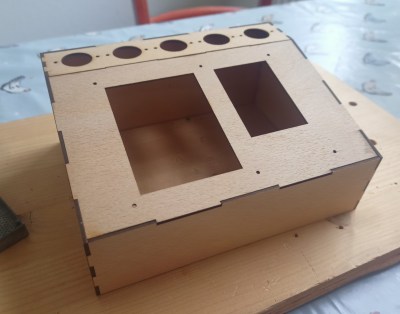We really love when makers make their construction techniques evident in an aesthetically-pleasing way, and [Laura Kampf] has created a clever joint that reveals how a piece is made.
[Kampf] is a big fan of using her domino joiner, which is similar to biscuits or dowel joinery, but she didn’t love how it hid the construction of the joint. She first figured out an “off label” use of the joiner by running it from the outside of the joint to show the exposed domino from one end.
Building on the concept to show an interesting contrast on both sides of the joint, she drilled a hole perpendicular the domino and placed a dowel through it, creating a locking joint. The choice looks great once a finish is applied to really accentuate the contrast, and another bonus is that if glue is only applied to the dowel and domino, it becomes trivial to separate the joint if needed by drilling out the dowel.
If you’d like to see some other interesting ways to join wood, how about this laser-cut wedge tenon, soda bottle heat shrink, or this collection of CNC joints.

















